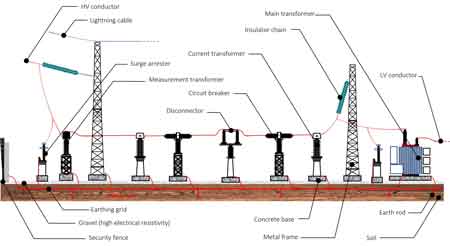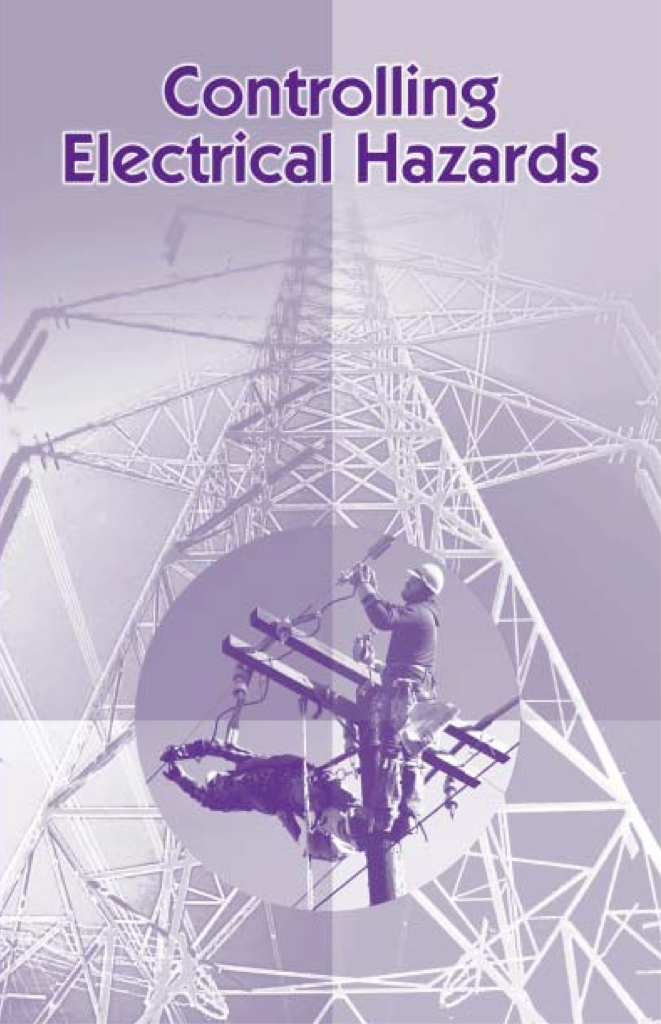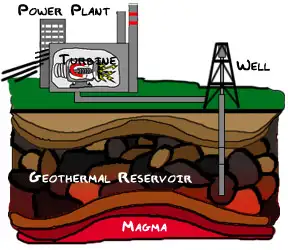Electrical Substation Components Explained
By R.W. Hurst, Editor

Substation Relay Protection Training
Our customized live online or in‑person group training can be delivered to your staff at your location.

- Live Online
- 12 hours Instructor-led
- Group Training Available
Download Our OSHA 3075 Fact Sheet – Understanding Electrical Hazards in the Workplace

- Learn the effects of electric current on the human body
- Understand OSHA safety standards and protective devices
- Discover essential lockout/tagout and grounding practices
Electrical substation components include transformers, circuit breakers, busbars, insulators, isolators, and protective relays. Together, they regulate voltage, protect systems, and ensure the safe and reliable distribution of power in transmission and distribution networks.
What are Electrical Substation Components?
Substations are the building blocks of the electric power system, forming the link between power generation and final distribution.
✅ Electrical substation components are the essential devices and systems used to control, transform, and distribute electric power within substations.
✅ These components include power transformers, circuit breakers, busbars, instrument transformers, and protection systems that manage voltage levels and ensure system safety.
✅ Together, they enable the efficient transmission and distribution of electricity by interfacing between power generation, high-voltage transmission lines, and end-user distribution networks.
Electrical Transformer Maintenance Training
Substation Maintenance Training
Request a Free Training Quotation
They handle the transformation of voltage levels, protect critical equipment, and support the efficient transmission and distribution of energy across the grid. Whether part of transmission lines or local distribution substations, substation equipment ensures a safe, continuous, and reliable power supply. “Understanding what is an electrical substation provides the context for how breakers, busbars, insulators, and protective devices work together to keep the grid reliable and safe.”
Core Components of Substation Equipment
Every substation is built around essential components that work together to manage electric power flow and system stability. At the heart of each station is the power transformer, which regulates voltage levels to facilitate efficient energy transfer. These devices either step up the voltage for long-distance transmission or step it down for safe local distribution.
-
Power Transformers: These devices adjust voltage levels between high-voltage transmission lines and lower-voltage distribution lines, enabling efficient transmission and distribution of electric power.
-
Circuit Breakers: Essential for protecting equipment, circuit breakers interrupt current flow during faults, preventing damage and ensuring safety.
-
Instrument transformers, which include current transformers (CTs) and voltage transformers (VTs), provide scaled-down measurements for monitoring and protection systems.
-
Busbars: Conductive bars that distribute power within the substation, connecting various components and facilitating the flow of electricity.
-
Lightning Arresters: Protect substation equipment from voltage surges caused by lightning or switching events by diverting excess voltage to the ground.
-
Insulators: Support and separate conductors, preventing unwanted current flow and maintaining system integrity.
-
Capacitor Banks: Assemblies of capacitors that improve power factor and voltage stability by providing reactive power compensation.
-
Relays: Protective devices that detect abnormal conditions and initiate circuit breaker operations to isolate faults.
-
Disconnect Switches (Isolators): To ensure a circuit is completely de-energized for maintenance, enhancing safety protocols.
Ultimately, capacitor banks play a crucial role in enhancing power quality. By compensating for reactive power, they enhance system efficiency and voltage stability. You can read more about their role in our article on the capacitor voltage transformer in a substation.
FREE EF Electrical Training Catalog
Download our FREE Electrical Training Catalog and explore a full range of expert-led electrical training courses.

- Live online and in-person courses available
- Real-time instruction with Q&A from industry experts
- Flexible scheduling for your convenience
Electrical Substation Components - Roles and Control Functions
Each component in a substation performs a specific operational task. The voltage transformer enables power to be transferred across different grid segments, while relays and breakers serve as the first line of defence against faults. Accurate monitoring from CTs and PTs ensures the substation can respond quickly to changing load conditions, supporting grid balance and efficiency.
Capacitor banks, used in distribution substations, correct power factor and improve voltage profiles, reducing transmission losses. These elements help maintain the integrity of power systems, ensuring a consistent and high-quality power supply.
-
Voltage Transformation: Power transformers adjust voltage levels to suit transmission or distribution requirements, optimizing energy flow.
-
Protection Mechanisms: Circuit breakers and relays work together to detect and isolate faults, maintaining system stability and preventing equipment damage.
-
Measurement and Monitoring: Instrument transformers provide accurate system monitoring and control measurements, which are essential for operational efficiency.
-
Power Quality Improvement: Capacitor banks enhance power factor, reducing losses and improving voltage profiles across the network.
Types and Configurations of Substations
Substations are not one-size-fits-all. Their design and layout depend on their role within the grid. Step-up substations located near generation sites raise voltage for long-haul transmission, while step-down substations reduce voltage for distribution networks.
Like those described in our electrical substation design guide, distribution substations are the final conversion point before electricity reaches homes and businesses. Switching substations primarily directs power flows, enabling flexibility in transmission line routing. Substations are also classified as indoor or outdoor, based on whether their components are housed in buildings or exposed to the environment.
For more detail on a special substation layout, see our explanation of what is a tie substation.
Safety Measures in Substation Operation
Ensuring safety in substation environments is critical. High-voltage equipment poses serious risks to personnel and infrastructure. To mitigate these risks, substations have earthing systems that channel fault currents into the ground, reducing the risk of electric shock.
-
Earthing Systems: Provide a path for fault currents to the ground, minimizing the risk of electric shocks and equipment damage.
-
Fencing and Physical Barriers: Prevent unauthorized access and protect personnel from high-voltage equipment, ensuring operational security.
-
Fire Protection Systems: Include fire barriers and suppression systems to mitigate risks associated with equipment fires and enhance safety protocols.
-
Personal Protective Equipment (PPE): This is essential for maintenance personnel to protect against safety hazards during operation and servicing.
Read our in-depth guide on substation protection for more on safety protocols and equipment.
Automation and Control Rooms in Modern Substations
Substations are increasingly being automated, utilizing systems that enable remote monitoring and operation. At the core of this shift is Supervisory Control and Data Acquisition (SCADA), which connects field devices to control rooms, where operators monitor performance, issue commands, and respond to faults in real time.
Remote Terminal Units (RTUs) and Intelligent Electronic Devices (IEDs) further enhance automation by enabling substation components to communicate directly with central systems. This level of control increases reliability and reduces downtime, supporting the broader shift toward digital substations, as covered in our digital substation article.
Frequently Asked Questions
What are the main components of a substation?
A typical substation includes power transformers, circuit breakers, instrument transformers, capacitor banks, busbars, disconnect switches, lightning arresters, and control systems.
What is the function of a capacitor bank?
Capacitor banks provide reactive power compensation, which helps stabilize voltage and improve power factor within the electric power system.
How does SCADA improve substation performance?
SCADA enables real-time monitoring and remote control of substation operations, reducing response time to faults and improving overall system efficiency.
Related Articles







